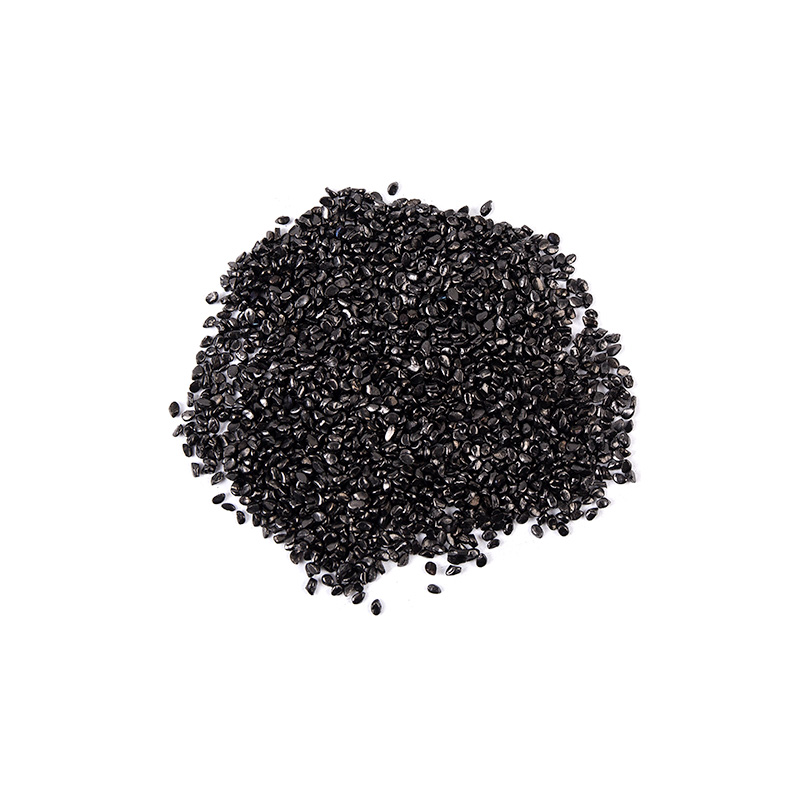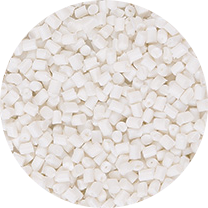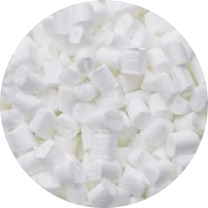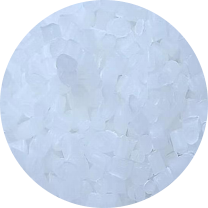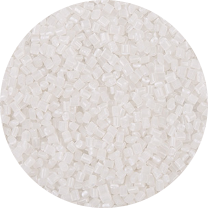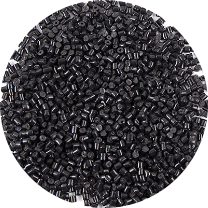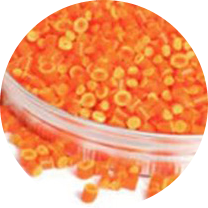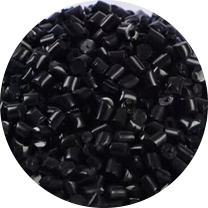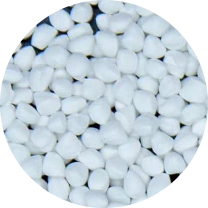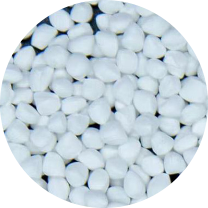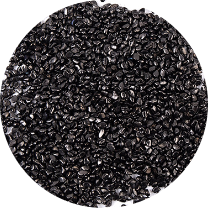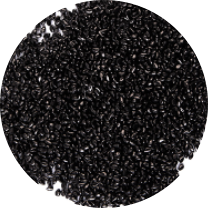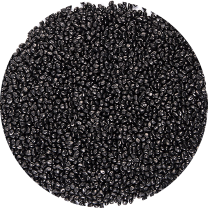Introduction to Surface Quality in Carbon Black Masterbatch Applications
The use of Carbon Black Masterbatch presents significant challenges in maintaining perfect surface quality across various polymer applications. Manufacturers often encounter surface imperfections that compromise product aesthetics and performance. Understanding the root causes of these defects and implementing preventive measures is crucial for achieving consistent, high-quality results in plastic production.
- Surface defects can reduce product value by up to 60%
- Proper dispersion techniques improve surface quality significantly
- Material selection impacts defect occurrence rates
Common Universal Grade Granules Black Masterbatch Black Plastic Granules
Common Surface Defects and Their Root Causes
Identifying specific surface imperfections is the first step toward effective prevention. Different defects indicate distinct underlying issues in the manufacturing process or material formulation.
Visual Imperfections and Their Significance
Surface flaws in products containing carbon black masterbatch often manifest as visible imperfections that signal specific processing challenges. These defects typically result from inadequate dispersion, improper processing conditions, or material incompatibility.
- Streaks and flow lines indicate poor dispersion and inadequate melting
- Speckles and contaminants suggest filtration issues or contamination
- Silver streaks typically result from moisture or degradation
- Voids and bubbles often stem from trapped moisture or volatiles
Technical Analysis of Defect Formation
The formation of surface defects follows predictable patterns based on material behavior and processing conditions. Understanding these patterns enables proactive prevention strategies.
| Defect Type | Primary Cause | Secondary Factors |
| Black Specks | Over-dispersed carbon black | Screen pack issues, contamination |
| Flow Marks | Improper melt temperature | Injection speed, gate design |
| Jetting | High injection velocity | Material viscosity, gate size |
| Splay Marks | Moisture content | Residence time, temperature |
Optimal Processing Parameters for Flawless Surfaces
Achieving perfect surfaces requires precise control over processing conditions throughout the manufacturing cycle. The best processing parameters for carbon black masterbatch vary by polymer type and product design but follow established principles for quality optimization.
Temperature Management Strategies
Temperature control significantly impacts surface quality, affecting both pigment dispersion and polymer flow characteristics. Proper thermal management prevents many common defects associated with carbon black applications.
- Melt temperature should typically range between 200-260°C for most polymers
- Consistent barrel temperature profiles prevent localized overheating
- Mold temperature control ensures proper surface replication
- Thermal degradation begins above recommended maximum temperatures
Pressure and Speed Optimization
Injection and holding pressures directly influence how the material fills the mold and packs against cavity surfaces. Optimizing these parameters eliminates flow-related imperfections.
| Parameter | Recommended Range | Quality Impact |
| Injection Pressure | 50-80% of machine maximum | Prevents jetting and flow marks |
| Holding Pressure | 60-80% of injection pressure | Reduces sinks and improves detail |
| Back Pressure | 5-15% of maximum | Enhances dispersion and mixing |
| Screw Speed | 30-70 RPM | Prevents shear-induced degradation |
Material Preparation and Handling Techniques
Proper material handling begins long before the manufacturing process and significantly influences final surface quality. The carbon black masterbatch selection guide emphasizes compatibility, drying requirements, and handling protocols.
Drying Procedures for Optimal Results
Moisture represents one of the most common causes of surface defects in plastic products. Proper drying eliminates moisture-related imperfections and ensures consistent processing behavior.
- Most polymers require drying at 70-85°C for 2-4 hours
- Moisture content should remain below 0.02% for critical applications
- Closed-loop drying systems prevent reabsorption during processing
- Desiccant-type dryers provide most consistent results for engineering resins
Mixing and Blend Consistency
Consistent masterbatch distribution throughout the base polymer ensures uniform coloration and prevents localized concentration variations that cause surface defects.
| Mixing Method | Advantages | Limitations |
| Mechanical Tumbling | Simple, low cost | Limited homogeneity |
| Vertical Blending | Good distribution | Potential separation |
| Horizontal Mixing | Excellent homogeneity | Higher equipment cost |
| Liquid Colorant | Perfect distribution | Handling complexity |
Equipment Considerations and Maintenance
Proper equipment selection and maintenance play crucial roles in preventing surface defects. Understanding how machinery influences processing helps manufacturers optimize their operations for superior surface quality.
Screw and Barrel Configuration
The heart of any plastic processing machine, the screw and barrel combination must be properly matched to both the base polymer and the carbon black masterbatch to achieve optimal dispersion without degradation.
- Barrier screws provide superior mixing for concentrated colorants
- Compression ratios between 2.2:1 and 2.8:1 work well for most applications
- Worn components cause poor plastication and inconsistent melt quality
- Mixing sections should provide sufficient shear without overheating
Mold Design and Maintenance Impact
Mold condition and design directly transfer to the finished product surface. Proper mold maintenance and appropriate design prevent many surface quality issues.
| Mold Element | Quality Consideration | Maintenance Frequency |
| Gate Design | Prevents jetting and hesitation marks | Design phase critical |
| Venting | Eliminates gas traps and burning | Clean after each production run |
| Surface Finish | Determines part appearance | Polish every 50,000-100,000 cycles |
| Cooling Channels | Prevents sinks and warpage | Descale annually |
Troubleshooting Common Surface Quality Issues
When surface defects occur, systematic troubleshooting identifies root causes and implements effective solutions. The troubleshooting carbon black dispersion process follows logical steps from material through processing to equipment.
Systematic Defect Resolution Approach
Effective troubleshooting requires methodical investigation of all variables that influence surface quality. This structured approach quickly identifies contributing factors and appropriate corrective actions.
- Begin with material verification and drying conditions
- Review processing parameters and historical data
- Inspect equipment for wear and proper operation
- Evaluate environmental factors and handling procedures
Specific Defect Resolution Strategies
Different surface imperfections respond to targeted corrective actions based on their underlying causes. Understanding these relationships enables efficient problem-solving.
| Defect Observed | Immediate Actions | Long-term Solutions |
| Black Specks | Clean barrel, check screens | Improve filtration, review masterbatch |
| Flow Lines | Increase melt temperature | Modify gate design, optimize speed |
| Splay Marks | Extend drying time | Improve material handling, check dryer |
| Jetting | Reduce injection speed | Modify gate design, increase melt temp |
Advanced Techniques for Demanding Applications
For applications requiring exceptional surface quality, advanced processing techniques and specialized material formulations provide solutions beyond standard practices. These methods address the most challenging surface defect prevention carbon black requirements.
Specialized Additive Technologies
Advanced additive systems complement carbon black masterbatch to enhance surface quality while maintaining color intensity and performance properties.
- Dispersing agents improve color distribution and reduce agglomerates
- Processing aids modify polymer flow and release characteristics
- Surface modifiers enhance gloss and smoothness
- Compatibilizers improve interfacial adhesion in multi-material systems
Alternative Coloring Technologies Comparison
While carbon black masterbatch remains the dominant coloring method, understanding alternative technologies helps manufacturers select the optimal approach for specific applications.
| Coloring Method | Surface Quality Potential | Application Considerations |
| Carbon Black Masterbatch | Good to Excellent | Requires optimal processing conditions |
| Pre-colored Compound | Excellent | Higher cost, less flexibility |
| Liquid Colorant | Excellent | Handling complexity, equipment needs |
| Dry Color | Fair to Good | Dusting, dispersion challenges |
FAQ
What is the maximum loading percentage for carbon black masterbatch to avoid surface defects?
The optimal loading percentage varies by application and base polymer, but typically ranges between 1-4% for most thermoplastics. Higher concentrations increase the risk of surface defects unless processing conditions are carefully optimized. For applications requiring deep black coloration while maintaining excellent surface quality, we recommend starting at 2% and adjusting based on actual results. The specific carbon black masterbatch selection guide for your polymer type provides detailed recommendations.
How does screw design affect carbon black dispersion and surface quality?
Screw design significantly influences dispersion quality and consequently surface appearance. Barrier screws with mixing sections provide superior distribution of carbon black particles throughout the polymer matrix. Proper screw design ensures adequate shear for dispersion without generating excessive heat that can cause degradation. The compression ratio, flight depth, and presence of mixing elements all contribute to final surface quality when using carbon black masterbatch.
Can mold release agents cause surface defects with carbon black masterbatch?
Yes, incompatible or excessive mold release agents frequently cause surface defects such as streaking, blotchiness, or reduced gloss. Silicone-based releases particularly can create fish eyes or orange peel effects. When surface quality is critical, we recommend using minimal internal lubricants within the compound rather than external releases. For difficult demolding situations, water-based semi-permanent releases specifically formulated for technical applications provide the best results without compromising surface quality.
What is the relationship between melt flow rate and surface defects in black products?
Melt flow rate (MFR) directly impacts surface quality, with both excessively high and low MFR values potentially causing defects. Materials with very high MFR may exhibit jetting or flow marks, while low MFR materials can show poor surface replication or witness lines. For optimal results with carbon black masterbatch, we recommend medium MFR grades (typically 10-25 g/10min for injection molding) that balance flow characteristics with structural integrity. The best processing parameters for carbon black masterbatch should be adjusted according to the specific MFR of your material.
How can I eliminate glossy spots on matte black surfaces?
Glossy spots on matte surfaces typically result from variations in surface replication due to temperature differences or pressure variations during packing. To eliminate this defect, ensure consistent mold temperature across all cavities, optimize holding pressure and time, and verify gate sizes are uniform. Additionally, review the troubleshooting carbon black dispersion protocol to ensure adequate pigment distribution. Sometimes incorporating specific matting agents into the formulation provides more consistent surface appearance regardless of minor processing variations.
What are the best practices for regrind management with carbon black compounds?
Proper regrind management is essential for maintaining surface quality in products containing carbon black. We recommend limiting regrind usage to 20-30% of the total material and ensuring consistent blending with virgin material. Each pass through processing equipment causes some pigment degradation, so implementing a first-in-first-out system and monitoring surface quality against regrind percentage helps maintain standards. For critical applications, dedicated surface defect prevention carbon black protocols may require lower regrind percentages or separate processing of regrind materials.


 English
English 中文简体
中文简体 한국어
한국어 عربى
عربى